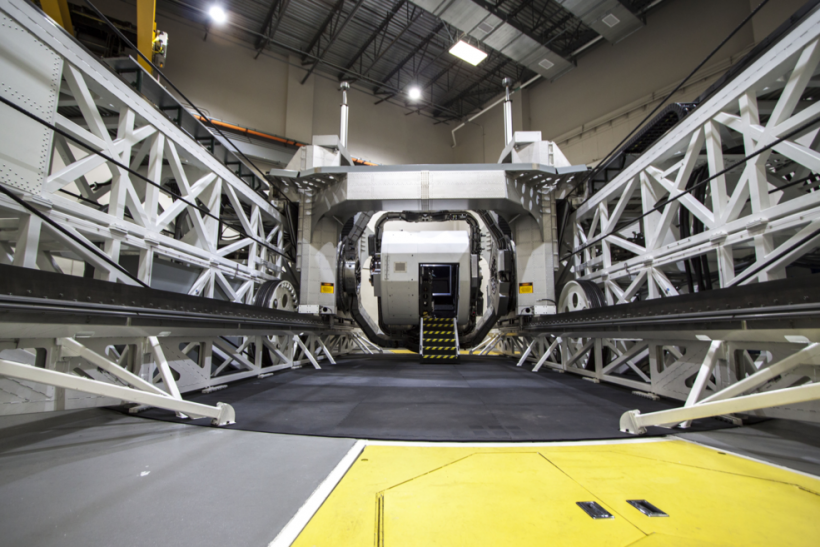Kraken, the colossal spinning device hailing from the US Navy, has found a new purpose in aiding NASA scientists in their quest to unravel the mysteries of motion sickness experienced by astronauts in space.
The journey into space and the return to Earth can subject astronauts to the unpleasant throes of motion sickness, complete with symptoms like dizziness, nausea, and vertigo.
These sensations can impede critical tasks during spacecraft landing or exit. To prepare astronauts for the disorientation they may encounter, NASA is turning to the 50-foot-long, 100-ton beast known as the Kraken, stationed at the Wright-Patterson Air Force Base in Ohio.

Kraken's Capabilities
The Kraken boasts impressive capabilities, able to simulate various flight scenarios by inducing sudden shifts in roll, pitch, and yaw, along with horizontal and vertical movements.
NASA scientists can configure the Kraken to replicate the conditions experienced during spaceflight, enabling them to explore the effectiveness of specific technologies and head movements in alleviating motion sickness.
In a forthcoming study, NASA and Navy scientists intend to enlist 24 active-duty service members to undergo a challenging 60-minute spin session inside the formidable Kraken.
This extraordinary experience will subject the volunteers to accelerations three times the force of gravity, accurately simulating the intense gravitational forces encountered during an astronaut's return to Earth.
Following their encounter with the Kraken, half of the participants will be instructed to perform specific head movements while sporting video goggles that meticulously monitor the motion of their heads and eyes.
Various metrics related to motion sickness, including blink frequency and changes in heart rate, will be meticulously recorded. Through real-time evaluations, researchers will gauge the extent of disorientation and illness experienced by these volunteers.
Participants in the Kraken study will complete tasks to assess balance, including standing on foam, walking, and navigating obstacles. After the Kraken spin, dizziness may affect performance.
Lead researcher Michael Schubert highlights the value of astronauts' anecdotes on head movements for balance recovery. The study aims to provide evidence on the effectiveness of specific head movements for astronauts.
If the results prove fruitful, astronauts can adopt tailored protocols to adapt swiftly to gravitational changes during spaceflight, especially during longer and more distant missions.
Read Also: NASA's TESS Finds Another 'Super-Earth' Exoplanet with Unusually Low Density
Beyond Space Travel
The implications of this endeavor extend beyond space travel, as Schubert's team plans to investigate whether these head motions can assist patients with balance issues.
A group of 24 civilian patients who have undergone inner ear tumor removal, a procedure that disrupts balance-maintaining nerves, will attempt the same set of tasks. Half of them will engage in the prescribed head motions, while the other half will not.
Schubert emphasized that confirming the benefits of head movements in this study could pave the way for introducing new therapies to the public, with NASA and the Navy playing a crucial role.
"This study renews a partnership between our laboratory and NASA, tracing back to the space program through the 1960s and 1970s," said Richard Arnold, director of the Naval Aerospace Medical Research Laboratory.
"We are excited to build on previous collaborations by addressing motion issues faced by both Naval aviators and NASA astronauts."
Related Article: NASA's Juno Mission Set to Fly Past Jupiter's Volcanic Moon Io









